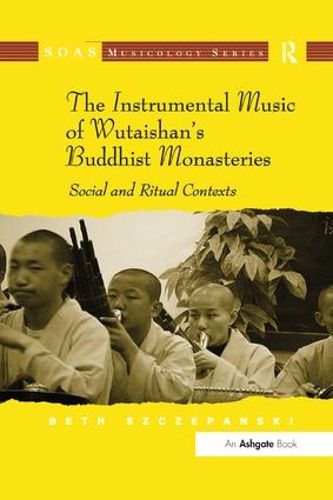Readings Newsletter
Become a Readings Member to make your shopping experience even easier.
Sign in or sign up for free!
You’re not far away from qualifying for FREE standard shipping within Australia
You’ve qualified for FREE standard shipping within Australia
The cart is loading…






Beth Szczepanski examines how traditional and modern elements interact in the current practice, reception and functions of wind music, or shengguan, at monasteries in Wutaishan, one of China’s four holy mountains of Buddhism. The book provides an invaluable insight into the political and economic history of Wutaishan and its music, as well as the instrumentation, notation, repertoires, transmission and ritual function of monastic music at Wutaishan, and how that music has adapted to China’s current economic, political and religious climate.
The book is based on extensive field research at Wutaishan from 2005 to 2007, including interviews with monks, nuns, pilgrims and tourists. The author learned to play the sheng mouth organ and guanzi double-reed pipe, and recorded dozens of performances of monastic and lay music. The first extensive examination of Wutaishan’s music by a Western scholar, the book brings a new perspective to a topic long favored by Chinese musicologists. At the same time, the book provides the non-musical scholar with an engaging exploration of the historical, political, economic and cultural forces that shape musical and religious practices in China.
$9.00 standard shipping within Australia
FREE standard shipping within Australia for orders over $100.00
Express & International shipping calculated at checkout
Beth Szczepanski examines how traditional and modern elements interact in the current practice, reception and functions of wind music, or shengguan, at monasteries in Wutaishan, one of China’s four holy mountains of Buddhism. The book provides an invaluable insight into the political and economic history of Wutaishan and its music, as well as the instrumentation, notation, repertoires, transmission and ritual function of monastic music at Wutaishan, and how that music has adapted to China’s current economic, political and religious climate.
The book is based on extensive field research at Wutaishan from 2005 to 2007, including interviews with monks, nuns, pilgrims and tourists. The author learned to play the sheng mouth organ and guanzi double-reed pipe, and recorded dozens of performances of monastic and lay music. The first extensive examination of Wutaishan’s music by a Western scholar, the book brings a new perspective to a topic long favored by Chinese musicologists. At the same time, the book provides the non-musical scholar with an engaging exploration of the historical, political, economic and cultural forces that shape musical and religious practices in China.